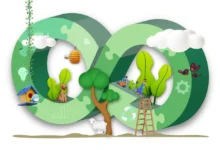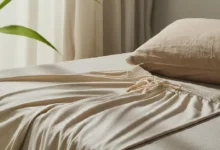As we investigated in our piece about the historical backdrop of necklaces, necklaces may maybe be the earliest type of adornments that people wore. Chain necklaces aren’t avoided from this set of experiences – they also have been worn since the beginning by everybody from middle age eminence to advanced rappers.
Here’s the beginning and end.
What are chain necklaces?
By definition, a chain is a progression of connections or rings, typically produced using metal, associated or fitted to each other. Chains have been utilized for a wide assortment of purposes, and for centuries we have worn them as gems.
Chains are typically said to address endless love, and human association – the unending length of time of circles without starting or end, connected to different circles in a strengthened way. The chain as far as we might be concerned today has been around for an expected 6000 years.
– Starting points of the chain necklaces
 The most established illustration of the chain statement necklace was found in old Babylonia (current Iraq), where regal burial places concealed wonderful adornments tracing all the way back to around 2500 BC.
The most established illustration of the chain statement necklace was found in old Babylonia (current Iraq), where regal burial places concealed wonderful adornments tracing all the way back to around 2500 BC.
The chains found in this burial place were principally forms of the enduring circle in-circle, a procedure that flowed all through the Mediterranean, Western Asia, and in the end the whole world. This can be found in this later mid-century pendant, highlighting a sea blue.
– Superficial points of interest
From the beginning of time, chain necklaces have been worn basically by eminence and the rich.
By 300 BC, the tip-top privileged societies inside society were wearing chains that had gemstones inserted in the connections.
During the Middle Ages, chains were much of the time utilized as seals of force and authority. The two lords and the ministry wore thick chains made of gold, complete with symbols or identifications of office. In the late Gothic period and early Renaissance, chains turned into a more basic piece of dressing even than pins.
It was then that they turned into an imprint generally for economic well-being. Henry VIII is frequently portrayed wearing a thick chain; he introduced hefty gold chains as indications of favour, however, saved the best for himself.
– Brightening and useful
As the hundreds of years passed, chain necklaces became as essential to the fashionable lady as they were to their male partners. These chains were impressively unique; presently more, more slender, and more fragile. This can be found in this mid-century pendant, which includes a wispy gold chain.
Ladies would have frequently worn gemstone pendants suspended from such chains. In the eighteenth century, chains became practical just as improving. Connected to muffs, which were bits of hiding configuration to keep women’s hands warm.
– Current chain necklaces
During the 1930s, Coco Chanel carried the chain necklace to the standard, when she started to seem hung to the midriff in plated chains and phony pearls. This look was available and moderate to everybody, including the average who was most definitely hit by the Depression.
As the twentieth century advanced, long gold chains returned into style. Notwithstanding, in the shortsighted boho style of the 1970s, they weren’t heaped on Chanel-style. All things considered, they were both thick and smooth and worn by all kinds of people.
– Some Tips Best For you
So you’ve purchased your fantasy wedding lehenga and you would now be able to breathe a sigh of relief. One moment! How are you going to style it? The manner in which you style it with gems could represent the moment of truth the look.
There’s such a huge amount to cherish about it – it’s an innovative method to add more detail, and it makes your outfit look interesting and super glitz. Doing it right can change even a straightforward lehenga into a stunning outfit.
Yet, do you realize HOW to layer it right?
It’s not difficult to turn out badly with the layering – you could do excessively, or too little, put some unacceptable shadings or shapes together. Which is the reason we’ve made a definitive manual to help you pick the right pieces that will look extraordinary together.


